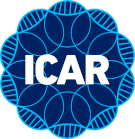Headings Format
This article explains the standards for headings and how to create them. There should be no need for a heading with the article's title since the article's name should be its title. For example, an article on DNA Technology should be named "DNA_Technology".
A within-article table of contents such as the one below this paragraph is automatically created by Mediawiki when three or more headings of any level are created within an article.
Level 1 heading
Body Text - The wikitext markup language provides easy-to-use symbols to create most document elements. Authors are encouraged to use only these elements rather than insert more complex HTML directives. For example, a level 1 heading is created by starting and ending the text line of the heading with an equal sign (=). The level 1 heading for this section was created with,
=Level 1 heading=
Authors are encouraged to view the markup source (using the source editor) on pages such as this one for more examples of markup syntax. Occasionally, more complex formatting may be required to accomplish a formatting goal. In those situations, authors should strive to minimize the complexity of the HTML.
Level 2 heading
A level 2 heading is created by beginning and ending the text line of the heading with two equal signs (==). For example, the heading of this subsection was created with,
==Level 2 heading==
Level 3 heading
Level 3 headings are created by beginning and ending the line of heading text with three equal signs (===),
===Level 3 heading===
Level 4 heading
Begin and end the level 4 heading text with four equal signs (====).
Level 5 heading
Begin and end the level 4 heading text with five equal signs (=====).
New level 1 heading
This is the second level 1 heading within this article. It was created by beginning and ending the heading text with a single equal sign (=), as before.
New level 2 heading
When a new level 2 heading is created after a new level 1 heading, it will be numbered beginning with the new level 1 heading's number.
New level 3 heading
etc., etc.
